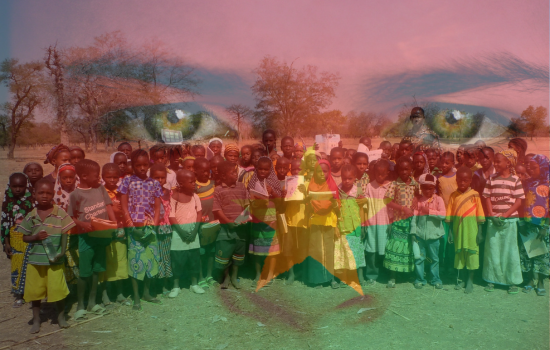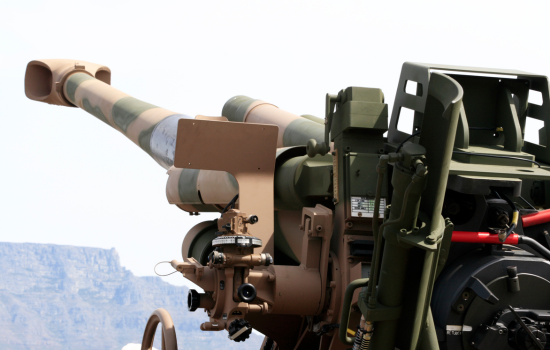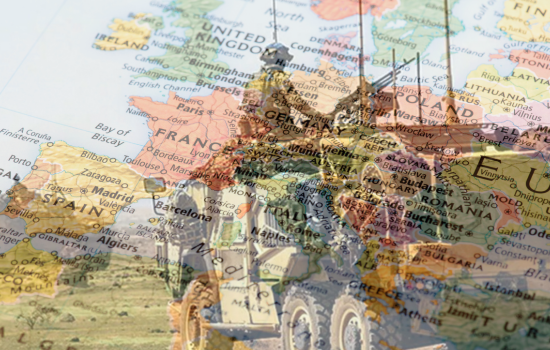An Overview: Hezbollah as a Terrorist Organization
Having an internationally accepted definition of terrorism is not an easy task and has not been achieved to this date. However, many experts would agree that – although this definition is difficult to achieve – terrorism will be comprised of the following elements: the threat of or the use of violence; attacking civilian targets; aiming to achieve political goals. Based on these three elements, Hezbollah can be categorized, without any doubt, as a terrorist organization and should therefore be designated as such.
Hezbollah is a hierarchical hybrid terrorist organization comprising three branches: the political wing, the social wing, and terrorist / military (Jihad) wing. The three branches of the organization are all managed and controlled directly by the organizations Supreme Leader – Hassan Nasrallah via the Shura Council.
The designation of Hezbollah as a terrorist organization is based on the following arguments and facts:
• The organizations goals and vision –
- Hezbollah’s ideology is based on Khomeini’s philosophy and ideology shaped and formed during the Islamic Revolution of 1979. Since its creation, Hezbollah has shared Iran’s view of Israel as the “Little Satan”, and denies Israel’s right to exist, seeking its physical destruction. This approach is supported by Iranian rhetoric regularly comes from President Ahmadinejad and Supreme Ayatollah Khamenei.
• The use of violence against civilians –
- The 1980s – Throughout the 1980s, Hezbollah used extreme violence, including tactics such as: kidnapping of foreign hostages in Lebanon and abroad, airline hijackings, and suicide bomb attacks international targets in Lebanon, including the American Embassy. During this period, the organization’s objectives within Lebanon were clear; to overthrow the existing regime through the use of violence, to apply Sharia law in Lebanon, and the removal of foreign forces from Lebanon.
- The 1990s- In the 1990s Hezbollah changed their operational behavior, becoming a hybrid terrorist organization; Hezbollah incorporated political participation coupled with acts of violence. The organization began an international campaigned aimed at hiding the terrorist wing of the organization, and branding Hezbollah as a legitimate Lebanese party which operates within the boundaries of the Lebanese political system. In order to emphasize this new image, Hezbollah stressed that their actions against Israel were essentially defensive in nature and were designed to liberate Lebanon. They claimed the launching of Katyusha rockets at Israeli civilian population centers was a reaction to Israeli aggression. The terroristic nature of the organization was reflected in the terrorist attacks carried out by Hezbollah against Israeli and Jewish targets in Argentina in the early 1990s. Throughout this decade the organization forced the Lebanese government to declare its support of Hezbollah’s actions, as the only armed group in Lebanon, while reasoning that resistance is an important component of the defense strategy for Lebanon against Israeli aggression.
- 2000- 2012: Withdrawal to the present – the IDF withdrawal from Lebanon to the internationally recognized border in 2000, did not bring about the disarmament of the organization, rather the opposite occurred. In the absence of justified guerilla activity against Israel, Hezbollah, with Iranian support, stockpiled an array of tens of thousands of missiles, which were primarily aimed as Israeli civilian centers of population. The range of these missiles reached all the way to the center of Israel. During the Second Lebanon War, in 2006, Hezbollah utilized these capabilities and fired missiles from Lebanon into Israeli population centers, causing loss of life and property. Since the war Hezbollah has restored and improved their missile systems, including adding more advance long range missiles to its arsenal. Lastly, Hezbollah’s leadership has declared their operational readiness for another round of violence.
• Terrorism against civilian targets abroad –
- Hezbollah’s terrorist activities are a product of meticulous organizational planning and infrastructure, aided by Iran. Throughout its existence, the organization has constructed a worldwide terrorist network and infrastructure, based mostly on Lebanese expatriates. This infrastructure is utilized by the organization to carry out criminal activity that brings in multimillion dollars annually, as well as gathering intelligence and carrying out terrorist attacks against Jewish and Israeli targets abroad. For example, the organization’s fingerprints, or its ally Iran’s fingerprint, are evident in more than dozen of terrorist attacks and attempted terrorist attacks which were carried out from 2008 to today. The outcome of the investigation by the Bulgarian government regarding the identity of the perpetrators who carried out the attack against Israelis tourists in Burgas on 18 July 2012, only reinforces the notion that Hezbollah is a terrorist organization which continues to operate against civilian targets wherever it identifies an opportunity and the operational capabilities to execute an attack. Hezbollah does not hesitate to harm the sovereignty of governments and foreign countries.
• The use of terrorism in the political arena in Lebanon –
- The operational strategy of Hezbollah in the political arena is to “walk on the edge”1 ; the organization uses violence as a central tool for achieving political goals. Hezbollah uses the threat of violence, political assassinations, street battles, and the taking over of key points / neighborhoods as a means to achieve political power. For example, it is not a secret that Hezbollah has been implicated in the assassination of former Lebanese Prime Minister Rafik Hariri, who was in staunch opposition to Hezbollah and the Syrian presence in Lebanon.2 Many other assassinations of opponents to the organization have also been attributed to Hezbollah, including ministers, parliamentarians, journalists, and even a Lebanese police investigator who investigated the organization’s involvement in Hariri’s murder. In May 2008, the organization’s use of terror to achieve political goals, reach a new peak in Lebanon. Hezbollah decided to launch an offensive on the Lebanese government’s power centers in Beirut (Sunni neighborhoods) and take control of them, after realizing that the Lebanese government was actively trying to weaken the organization. During the fighting, which lasted approximately three weeks, dozens of civilians were killed and injured. External intervention by the Arab’s states, led to the formulation of the “Doha Agreement”, which benefited Hezbollah, as most of its demands were accepted.
At this point it must be asked why Hezbollah is not listed as a terrorist organization by the United Nations as well as by most countries in the world? And why is the organization as a whole only designated by four countries as a terrorist organization (Israel, United States, Netherlands, and Canada)? Furthermore, why do a limited number of countries only designate the terrorist wing of the organization (United Kingdom, Australia, and New Zealand)?
While there are many arguments for not fully designating Hezbollah as a terrorist organization, this is not the place to detail them. These opinions usually lie between two extreme points along the scale. The first one: the lack of international consensus on the definition of terrorism, national political interests,3 lack of knowledge about the organization, lack of desire to be involved, and the second is an acceptance of Hezbollah’s campaign of be considered a legitimate Lebanese political party.
However, Hezbollah does not view itself as a divided organization, with no connections between its Jihadi and political wings. Therefore international declarations that only parts of Hezbollah are a terrorist organization is problematic and is considered a “fig leaf”. On several occasions throughout its historical development, Hezbollah itself has stated clear and precise language that it is a hierarchical organization, operating as a single unit, under the control of a single leadership headed by Hassan Nasrallah via the Shura Council which represents all wings of the organization.4 The entrance of Hezbollah into politics did not restrain the organizations violence approach as it did with Hamas or other Islamic actors like Iran after the revolution. Its power has been used to implement Sharia law and Islamic ideology.
In summary, the Burgas attack and the findings of the Bulgarian government investigation, indicate that the terrorist organization Hezbollah is behind the attack. This is not a one-time phenomenon or event; rather, it is Hezbollah’s continuous policy and strategy, supported by Iran, aimed at the use of violence to target civilians to achieve the organizations goals. Whether it be by firing rockets at civilian population centers in Israel or terrorist attacks against Israeli and Jewish targets abroad, or whether it is an attack against the Lebanese opponents of the organization, or foreigners in Lebanon or abroad.
In order to effectively cope with Hezbollah’s activities, the international community must come to a broader understanding that Hezbollah is a terrorist organization and it must be branded as such and outlawed in as many countries as possible.
Refrences:
1. Azani, Eitan, Hezbollah’s Strategy of “Walking on the Edge“: Between Political Game and Political Violence, Studies in Conflict and Terrorism, pp. 741-759(19), November 2012.
2. In 2011 the International appointed Special Tribunal to Lebanon, which resides in the Hauge, issued four arrest warrants against Hezbollah operatives, including senior commander Mustafa Badr Al Din, brother in law of Imad Mughniyeh, on charges of planning and executing the assignation of former Lebanese Prime Minister Rafik Hariri.
3. Europe’s political considerations stem from the concern for the stability of Lebanon, as well as to the safety of UNIFIL as many European countries are contributing members.
4.Dr. Col. (Res.) Eitan Azani , Hezbollah – a global terrorist organization – situational report as of
September 2006.”House Committee on International Relations – Subcommittee on International Terrorism and Nonproliferation”, https://www.investigativeproject.org/documents/testimony/260.pdf






